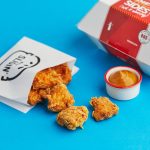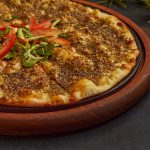
Factors About Good Food Photography
Food photography is an emerging profession with increasing demand in the food industry. It is equally justifiable to see the rise in demand, owing to the wonders done by an efficient and professional food photographer. Food photographers have a different kind of eye and mind to see how best cuisine can be presented to get maximum attention.
But, how to find out if the food photographer that you are considering is a professional and perfect person? As said above, each photographer has a different vision and idea about how best the food can be presented. It becomes even more important if you are a blogger, an online store, vlogger or need to present your food beautifully to get more attention and generate more sales.
You don’t need to worry! In this article, I will talk about certain factors which will help you in selecting just the type of food photographer that you need, and in getting simply awesome outcomes. But, before diving into the details, let me bifurcate the points for you into two categories. In this post, I will be telling you certain Dos and Don’ts to help you make a well-thought and better choice while finalizing a food photographer. Let’s get started!
The Dos:
Correct Equipment and Props
The food photographer you choose must have the required equipment and prop to shoot the pictures as per the desires. Here, having high-end and varied equipment and props is definitely desirable but it’s okay if your photographer happens to lack on the equipment part. After all, the final result matters the most, right? For the part of props, if possible, you can help out by providing some utensils and cutlery if you have or can arrange them. But, do make sure to first get some idea about what will be needed and who will be arranging it. Also, if your food photographer will be charging extra for the props. Also clarify if you will be using models in the shoot, their charges, etc.
Angle Matters
Food photography is mostly done from three angles, (i) The Master Shot, (ii) The Medium Shot and (iii) The Close-Up Shot. In the Master Shot, the photographer captures more than just the food. Parts of your place, the table and tableware, etc will also be captured in the shot. This shot helps in creating a better impression and is mostly meant for blogs, magazines, etc. The Medium Shot is comparatively closer to the food and includes less of the background. This shot is most preferred in menus and of course for other purposes too like blogs, pamphlets, brochures, etc. Using this shot, you can shift the focus from the background and food to ‘just the food and selected table-ware’. The Close-Up shot is purely focused on the food or cuisine being captured. This shot is meant when your sole purpose is to sell the food in the picture and nothing to do with the table-ware. In this shot, care needs to be taken that the food is presented perfectly and is highlighted as well.
Correct Lighting
In the case of food photography, the majority of the time, flashes spoil the pictures instead of enhancing them. So, to get better results, natural light or artificial lights are always better than depending on flashes. Due to this reason, it is also advisable to shoot either in the day time and at a location which is naturally well lit or with lots of adjustable light equipment. Having plenty of adjustable light equipment lets the photographer adjust the lights as and when needed for the different shots.
Participation Is Must
Your presence is a must when the food photographs are being taken. It doesn’t matter if you need to be present in the photographs or not. Your presence will ensure that the shots are approved by you as soon as they are captured. Only the pictures which need touch-ups and further editing will remain pending for finalization. But, you can still review the angle, the shot, the contents and the area captured in the images and ask for more options to be clicked if you feel necessary. Additionally, if you have not included styling in the assignment, your presence will ensure that you can do the required styling to get perfect shots.
Service Charges Clarity
Food photography needs more than just food and a camera. It needs proper space, props, lightings, models, styling, etc. Some of these may not be needed depending on the type of shot, intended use of the pictures, etc. But, clarifying service charges for the whole project, what will be included and charges for additions, number of pictures, options to be provided, etc help in better planning and ideation. You should also confirm the timeline for everything, with a little space for delays, to accommodate emergencies and unforeseen obstacles.
Sample Work
Ask for some sample pictures or portfolio of the photographer. If possible, check references, reviews and ratings from other clients. All these will help you in getting clarity about the photographer’s efficiency, creativity and overall, what you can expect from him/her.
Well Communication
‘Communication’ is a simple word but holds immense importance. You need to communicate well with your food photographer. The communication can be about what you expect from the shoot, what kind of images you are wishing to have, where you intend to use the images, how many images you want, which parts of the set-up or the food you want to be highlighted, etc.
The Don’ts
Don’t Copy-Paste Idea
Never copy-paste the idea or picture shot by anyone else. It is always better to brainstorm and create your own, unique set-up and pictures.
Don’t Judge Based on The Equipment
As said above, more or less equipment doesn’t matter. What matters is the final result. So, don’t ask for which equipment the photographer will be using, ask for sample pictures or portfolio.
Don’t Keep Budget Too Tight
Try to keep your budget as much as possible. This will enable the photographer to have more freedom with creativity. Ultimately, you may get better results in terms of the perfect picture and higher revenues, along with the benefit of better brand status.
I hope this blog helped you get some insight into what to do and what not to do while thinking of food photography. Do check out my portfolio and let me know your comments. Thank you!





